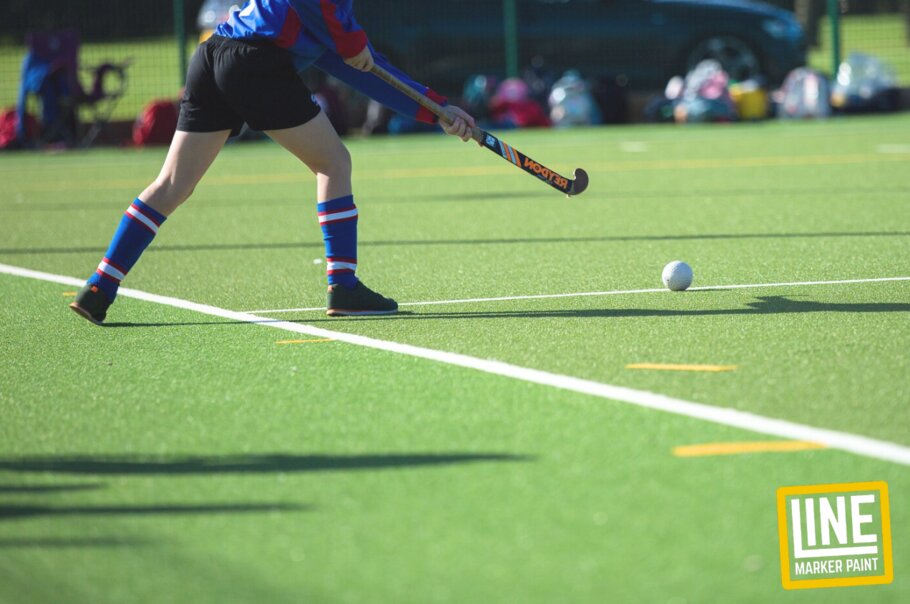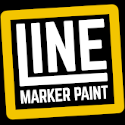The Dimensions Of A Field Hockey Pitch

INTRODUCTION
Did you know that hockey is one of the world’s oldest sports? There is evidence that the sticks-based game was enjoyed by the earliest civilisations, including the ancient Egyptians, Greeks and Persians. Modern field hockey combines speed, skill and cooperation to create an exhilarating team sport. Hockey is enjoyed by men and women equally, with clubs dotted throughout the UK.
Field hockey consists of two teams with 11-players per side including a goalkeeper. Players use curved sticks to manoeuvre the small, hard ball past the opposition and into the goal to score. The fast-paced game not only improves athleticism and cardiovascular performance but greatly develops social skills due to the level of communication, coordination and teamwork required for a successful game.
Historically, field hockey was played on natural grass, but today artificial turf is more common. Accurate dimensions and sizes of the pitch are essential to the game rules, regulations and safety. Line marking not only ensures fair game, but it also helps to indicate boundaries and direct players on where to stand on the pitch.
OVERALL DIMENSIONS
A field hockey pitch is a rectangular field divided into two halves for the two teams. Measuring 100 yds (91.4m) in length by 60 yds (55m) in width, a hockey pitch is similar to a rugby pitch, only with a few notable differences. The total area of a standard field hockey pitch is 5,027m². A pitch boundary is marked on the turf to signify the field of play. Within, the playing field is divided into three sections: defensive, midfield and attacking. These areas are signified by the centre line and two 23-metre lines. On either side of the pitch, there are striking circles surrounding the hockey goal. In total, approximately 3.5 litres of artificial line marking paint is needed for line marking a hockey pitch made from artificial turf.
.png)
SIDELINES
Running parallel to each other, the sidelines extend 100 yards (91.4m) lengthwise, establishing the field’s perimeter. There must be a minimum 2m run-off on either side of the field, plus a minimum 3m run-off at the backlines. The International Hockey Federation states that the last metre of run-off behind the backlines can be a different colour to the rest of the pitch if playing on artificial turf.
Estimation: With a standard Zebra Artificial Grass Line Marking Machine, approximately 0.73 litres of paint is required for two sidelines.
BACKLINES
The backlines establish the width of the field of play, measuring 60 yards (55m) from corner to corner. The goal is situated in the centre of both backlines, with a length of 2.14m by a 3.66m width. So, the precision of the backlines is paramount, as once the ball passes this line a point is awarded. Reword or make the goal a separate section
Estimation: With a standard Zebra Artificial Grass Line Marking Machine, approximately 0.44 litres of paint is required for two backlines.
STRIKING CIRCLE
Surrounding the goal on either end are two striking circles. The straight white line curves to form a ‘D’ shape against the backline, signifying the area in which a goal can be scored when struck within this circle. The circle must have a radius of 16 yards (14.6m). A second circle, known as the broken line, surrounds the striking circle - extending 5.4 yards (5m). This is mirrored on the other end of the pitch.
Estimation: With a standard Zebra Artificial Grass Line Marking Machine, approximately 0.70 litres of paint is required for two striking circles and two broken lines.
23-METRE LINES
The 23-metre (25 yards) lines are marked 23 metres from each backline. The 23-metre line is a significant border: it is used for re-starts and for marking the point beyond which a free hit is awarded for the defending team if an offence is made before the line.
Estimation: With a standard Zebra Artificial Grass Line Marking Machine, approximately 0.44 litres of paint is required for two 23-metre lines.
CENTRE LINE
The centre line marks the midpoint between the two sides of the pitch. It serves for several purposes, including face-offs at the beginning of the game and following a goal.
Estimation: With a standard Zebra Artificial Grass Line Marking Machine, approximately 0.22 litres of paint is required for two 23-metre lines.
PENALTY MARKERS
From each goal post, there are markers at 5m and 10m in either direction along each backline. As specified by the International Hockey Federation, the 10m mark establishes the point from which an attacker can take a corner penalty, whilst the 5m mark indicates the closest proximity in which a defender may stand. There is also a penalty spot located 6.4m (7 yards) away from the centre of each goal line and is used for a penalty stroke.
MARKING THE LINES
Everything you will ever need to successfully mark a field hockey pitch is available from our wide array of products. From our line marking machines, accessories and paints, our Zebra range is one of the most popular choices, providing a professional-grade field marking solution, transforming any turf into an official pitch overnight. Zebra's unique patented paint formula is brand-beating, containing a higher concentration of pigment solids than its competitors. You can expect crisp, white lines that are visible from the furthest spectator seat in any weather.
Try out our new line marking paint calculator for an estimate of how much paint you will need for your specific field size. If you wish to seek professional assistance in line marking, our team of experts is available to provide guidance and ensure precise application for the perfect pitch. We are happy to help over the phone or via Live Chat.
